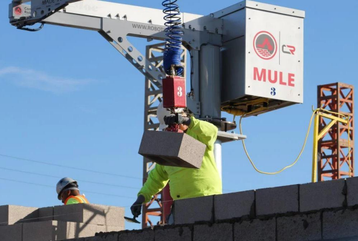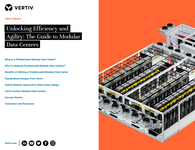Data centers that want to reduce emissions should ditch traditional "tilt-up" construction, in favor of low-carbon masonry blocks, according to a report.
The move could reduce the embodied carbon in data center walls by 50 to 70 percent, without adding much to the costs of building, according to a report from KPFF Consulting Engineers, which was commissioned by CarbonBuilt, a maker of low-carbon concrete masonry units (CMUs).
Data centers are usually built with the tilt-up method, in which ready-mixed concrete is cast on-site to form the concrete walls of a building on a flat surface, which are then tilted up and joined into a building.
However, concrete is a major source of emissions, contributing eight percent of the world’s CO2 emissions, making it a worse polluter than the airline industry.
According to the report, concrete contributes nearly 50 percent of the embodied carbon of a typical building, and the number of new data centers in construction will add millions of tons of CO2 to the atmosphere in the coming years.
The report considered an 87,500 sq ft (8,100 sqm) industrial warehouse built in 2022 with 38-foot concrete exterior wall panels. KPFF put together a redesign for the same facility, using ultra-low carbon concrete blocks, and carried out a life cycle analysis (LCA) for the two different wall types, based on Environmental Product Disclosures (EPDs) for components such as ready-mix concrete, rebar, grout, mortar, and the alternative low-carbon blocks.
The LCA showed that embodied carbon reductions could be reduced by 48 to 70 percent, and the change in construction would only add one or two percent to the total cost of the project.
Tilt-up has been used in building data centers because it is believed to save costs, but KPFF argues that new construction techniques including robotics could reduce costs, making block building more competitive with tilt-up construction.
“For a given warehouse or data center project, there is nothing that would preclude me from considering both tilt-up and CMU on an equal basis,” said the report's author, Jeff Asher, managing principal and past president of KPFF Consulting Engineers. “It’s urgent that the construction industry apply an application-specific lens when selecting concrete methods and materials throughout the building system in line with reducing embodied carbon impacts.”
The report also says the same construction method should be adopted by logistics facilities, another class of building that is booming thanks to online ordering and delivery.






